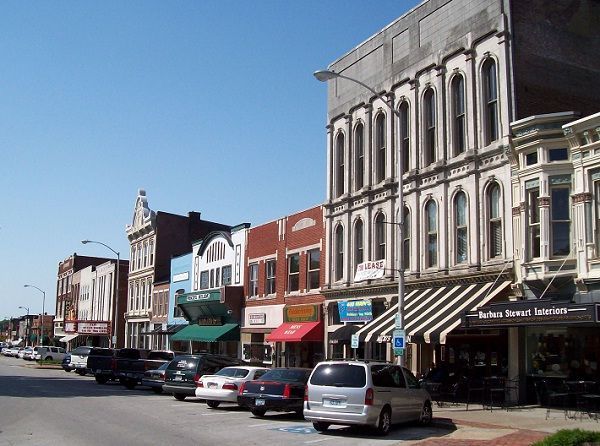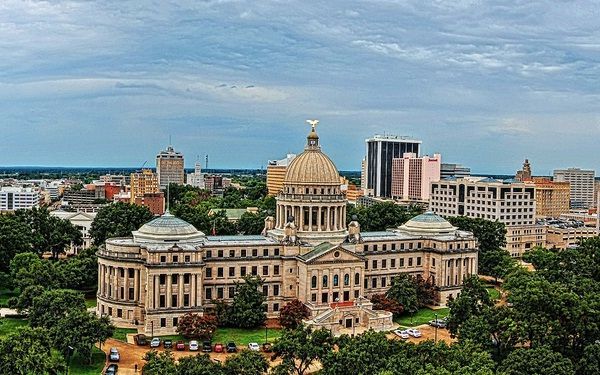Article
10 Most Obese States
Author(s):
Obesity has long been a problem in the United States, and a new report underscores that fact. The Robert Wood Johnson Foundation and the Trust for America's Health have unveiled their latest obesity findings in a report titled "The State of Obesity." The findings are troublesome.
Obesity has long been a problem in the United States, and a new report underscores that fact.
The Robert Wood Johnson Foundation and the Trust for America’s Health have unveiled their latest obesity findings in a report titled “The State of Obesity.” The findings are troublesome. More than one-third (34.9%) of American adults are considered obese, defined as having a body mass index of greater than 30. Among children, 16.9% are obese.
Those numbers nearly double when individuals who are overweight, but not obese are added in. Altogether, 68.5% of US adults are overweight or obese, as are nearly one-third (31.8%) of children.
The good news, according to the report, is that the uptick is slowing. In 2005, all but one state reported an increase in obesity. In 2013, the year on which the report is based, only 6 states reported increases.
Still, with the link between obesity and a plethora of other health problems, health workers and policy makers have their work cut out for them.
Below is the 10 states with the highest obesity rates, according to the report:

31.7%
South Carolina’s obesity rate has been trending steadily upward since 1990, when only 12% of adult South Carolinians were obese. In 2013, men and women had roughly the same obesity rates, 31% and 33%, respectively. Young adults aged 18-25 had an obesity rate of 18.8, making them the least obese cohort in the state. Adults age 45-64, however, had an obesity rate of 37%.

31.8%
Indiana is the northern-most state on the list, which is mostly made up of states in the southeastern quadrant of the United States. Like most of the states on the list, Indiana’s adult obesity rate has more than doubled since 1990. The foundations also note that Indiana does not have legislation requiring BMI or other health screenings for children. The reports authors believes those screenings could help parents and policymakers combat childhood obesity.

More than 14% of 2- to 4-year olds in Alabama already register as obese according to BMI calculations. That number rises slightly as children age through school. By young adulthood, 20.6% of Alabama residents are obese, according to the survey. Those numbers help contribute to other health problems. For instance, 40.3% of Alabama adults suffer from hypertension. Diabetes afflicts 13.8% of the state’s residents.

32.5%
Nearly a quarter (23.8%) of Oklahoma’s young adults (aged 18-25) area categorized as obese, though the rates don’t rise as sharply with age in Oklahoma as they do in other states. Adults age 45-64 had a 36.9% obesity rate, somewhat lower than many other states on the list. Part of the problem for young adults could be related to school, the study suggests. Oklahoma has no physical activity requirements for schools.

33.1%
More than one-fifth (21.1%) of children aged 10-17 rank as obese in Louisiana, despite the fact that the state has physical education and activity requirements, health education requirements, and health assessments and screenings of students. However, Louisiana has some positive momentum. In 2012, the state ranked first in the nation in obesity, with an obesity rate of 34.7%.

33.2%
Kentucky has the highest obesity rate of any state among high school students — 18%. If there’s a silver lining, it’s that the obesity rate among children ages 10-17 actually dropped, albeit slightly, from 21% in 2007 to 19.7% in 2011. By the time Kentucky residents reach the 26-44 age bracket, one-third (33.1%) are obese.

33.7%
More than one-third of Tennessee’s residents are obese, according to the study. The state saw a dip in obesity from 2010 (31.9%) to 2011 (29.2%), but by 2013, the obesity rate was back up to historic highs. More than a quarter of retirement-age adults were obese, with a rate of 26.6%, the study found. The state is also ranked No. 6 in hypertension rates and No. 5 in diabetes rates.

34.6%
Arkansas’ obesity problem appears to get worse with age. While the state ranks 18th in the nation when it comes to obesity rates for children ages 2-4 (14.2%), the state has the second-highest obesity rate among high-schoolers (17.8%). Arkansas has physical education requirements, but no physical activity requirements for students.

35.1%
West Virginia is one of only 2 states whose obesity rates top 35%, landing it in a tie for the most obese state. Fully 41% of the state’s adults have hypertension, the highest rate in the nation. The state rates second in diabetes, as 13% of residents have been diagnosed with the disease. Unlike many other states, there is a relatively minor racial disparity. White West Virginians had a 33.8% obesity rate. Black West Virginians had an obesity rate of 36.5%. Latinos in the state had a 32.1% obesity rate.

35.1%
Mississippi ties with West Virginia at the top of the obesity list. It’s familiar territory. Mississippi has topped the list 9 of the past 10 years. The one ray of hope is with the state’s youngest residents. Mississippi’s obesity rate for children ages 2-4 dropped from 14.6% to 13.9% between 2008-2011, a statistically significant drop, according to the report.
The full report can be viewed at www.stateofobesity.org.




